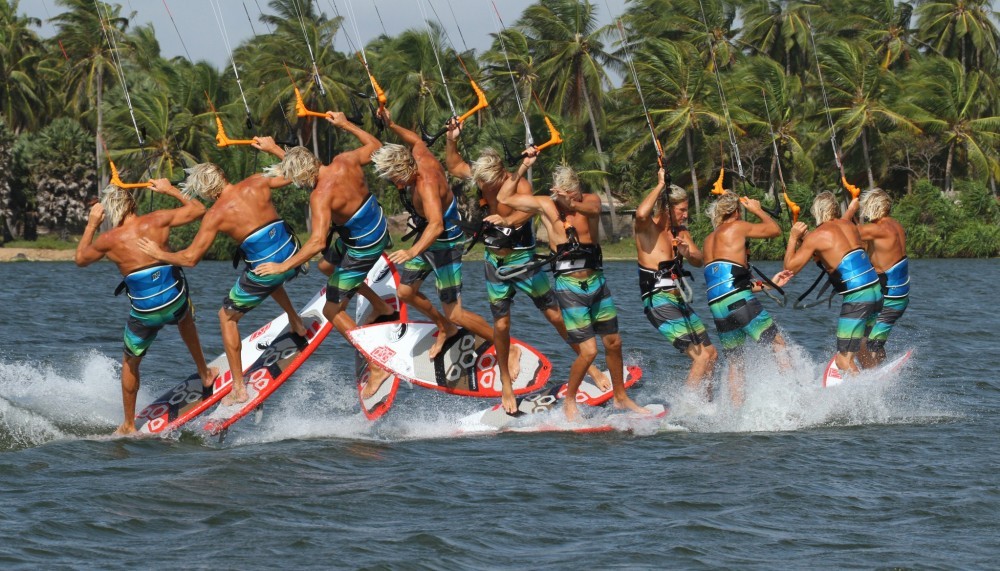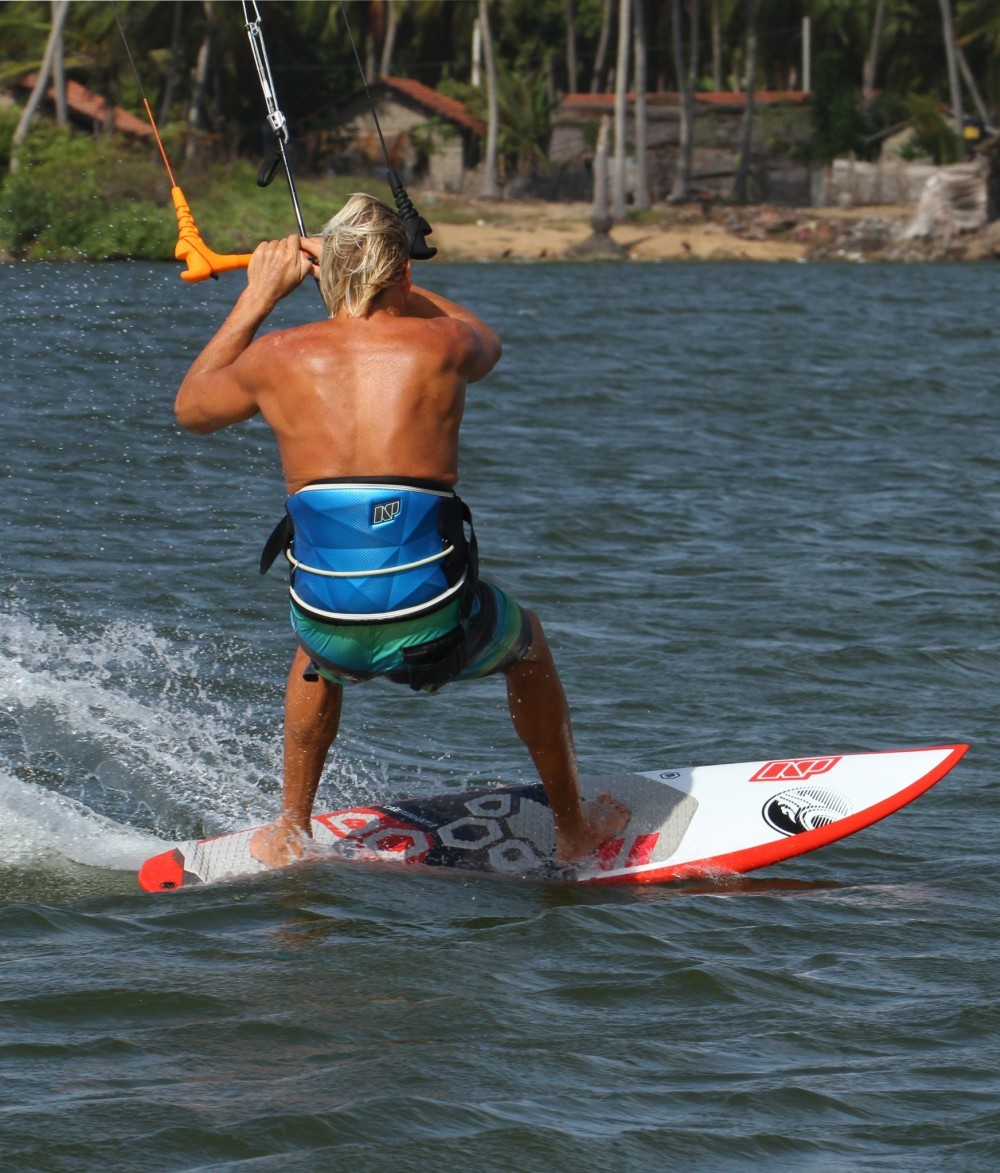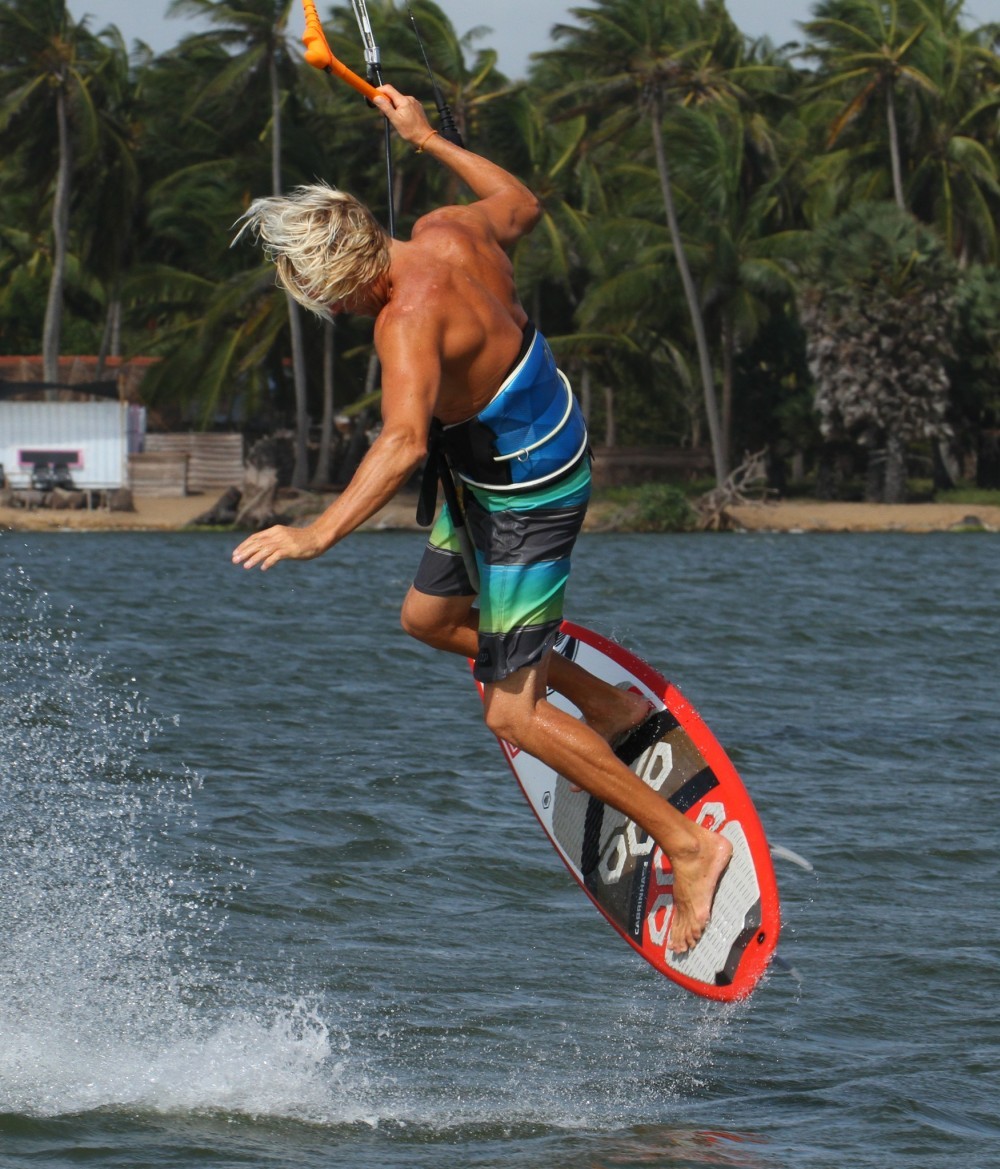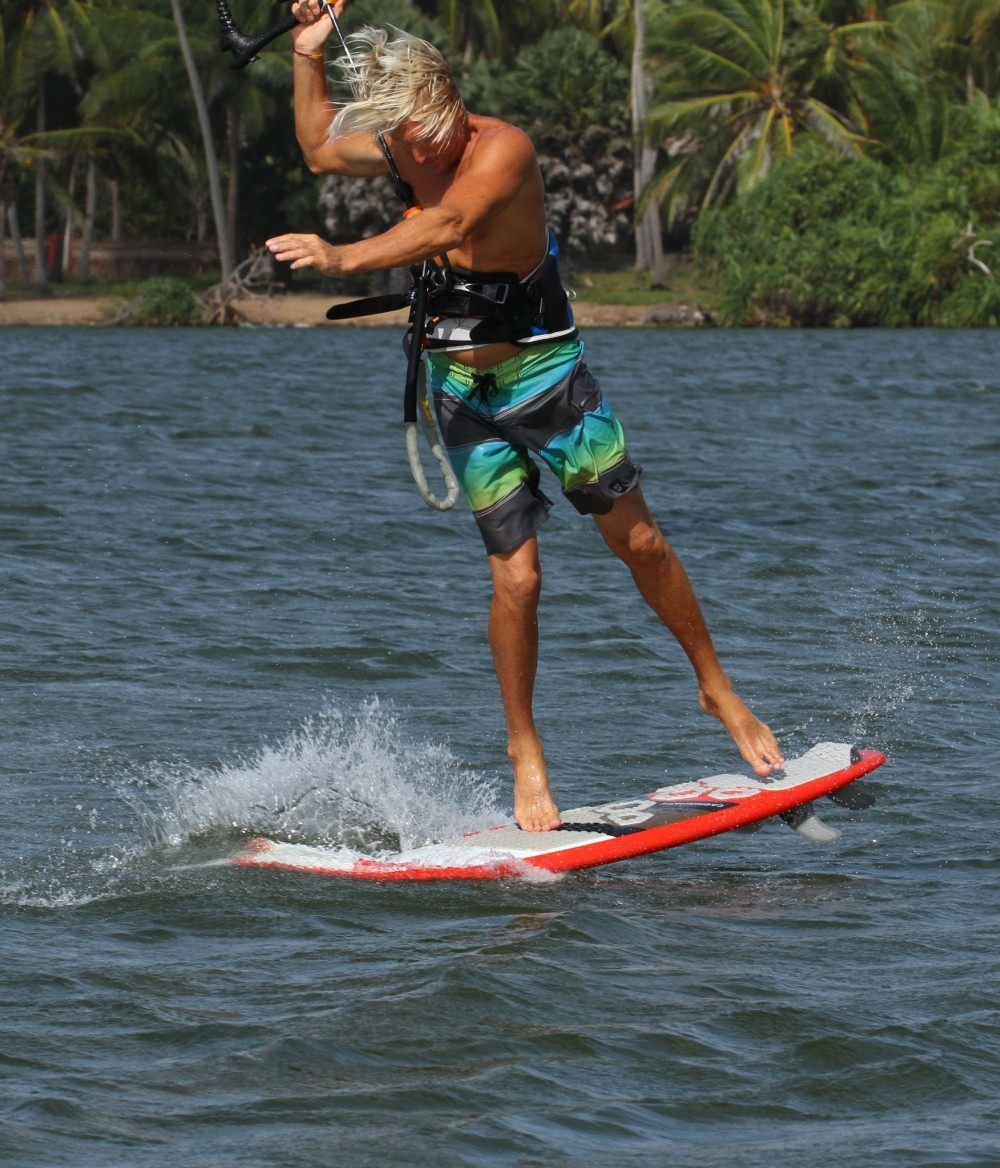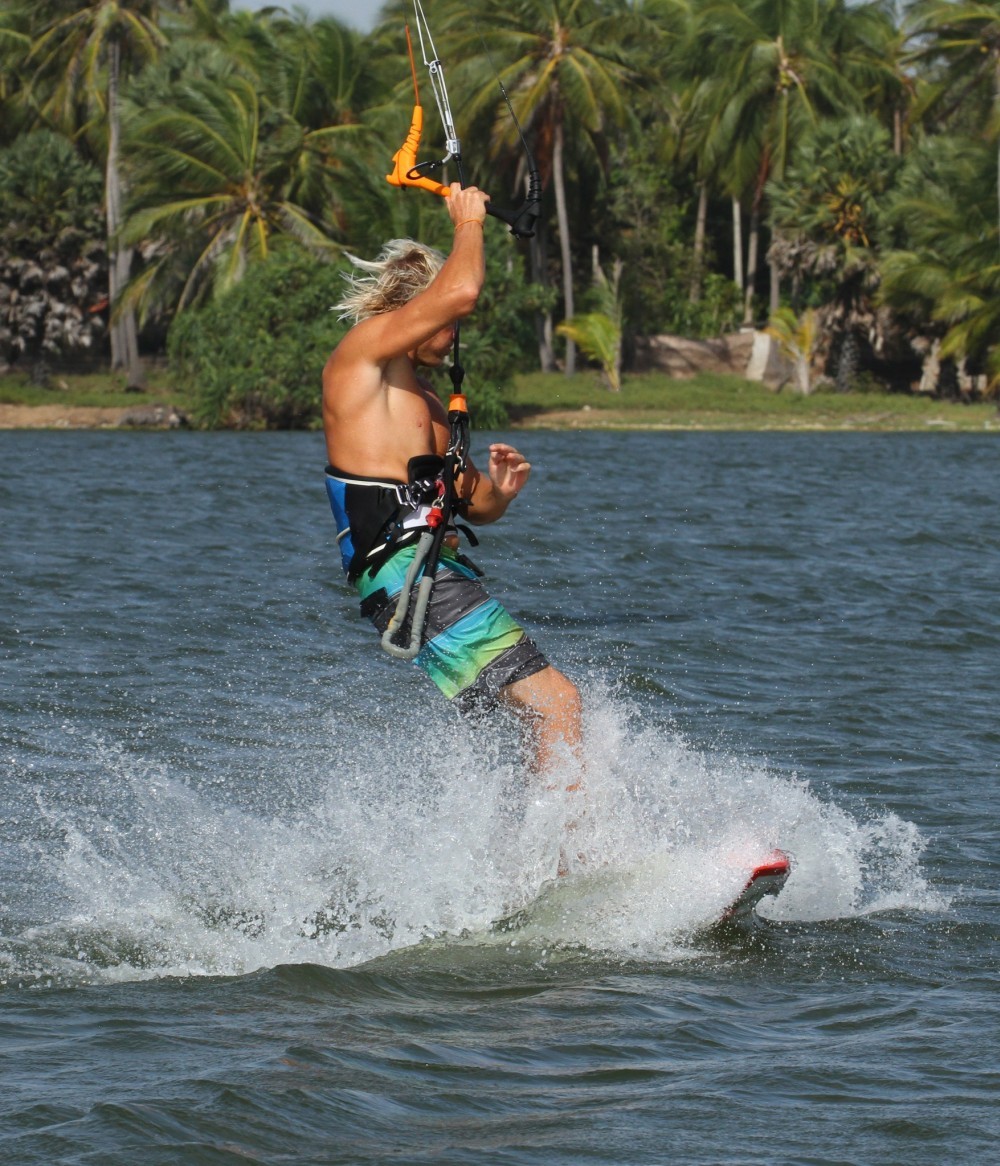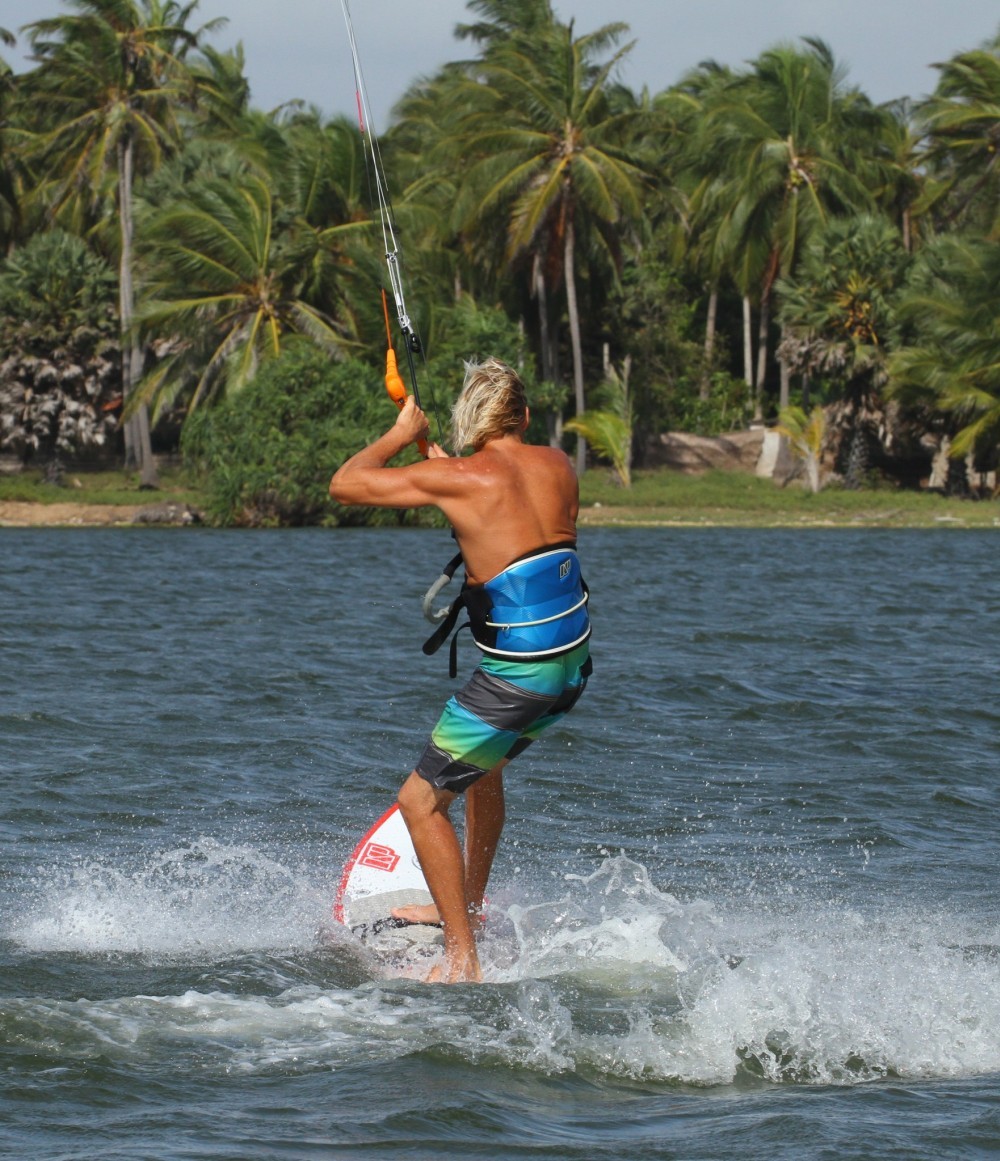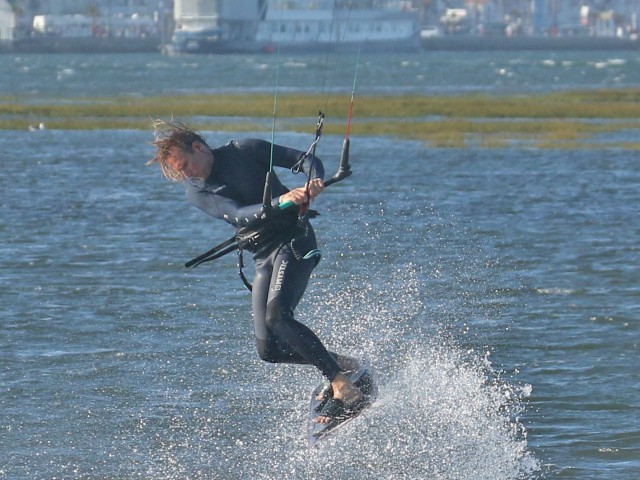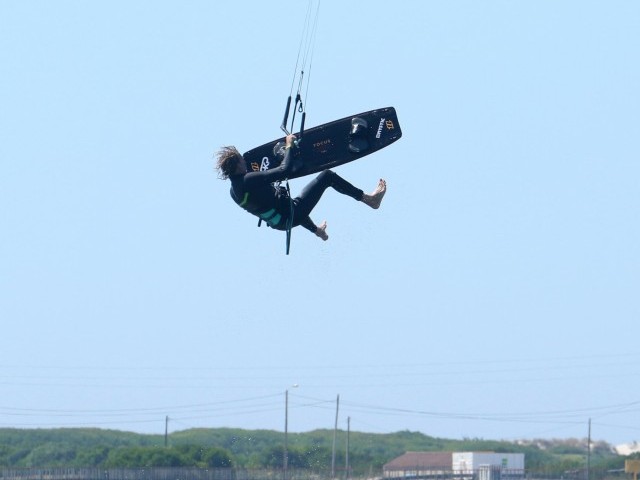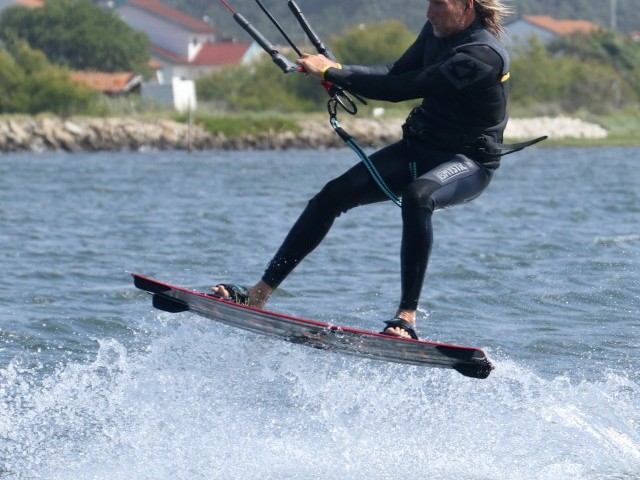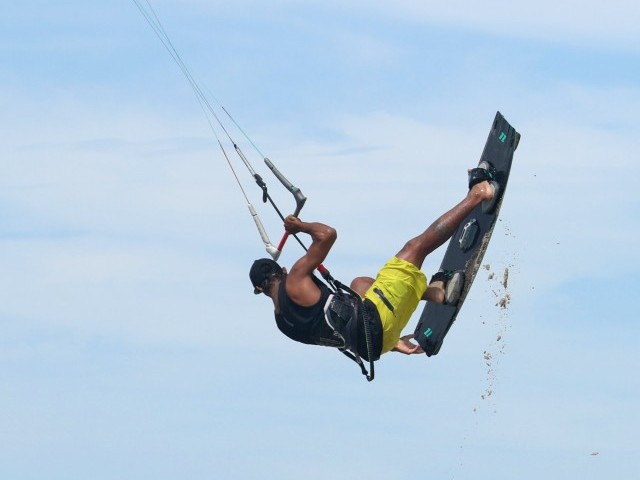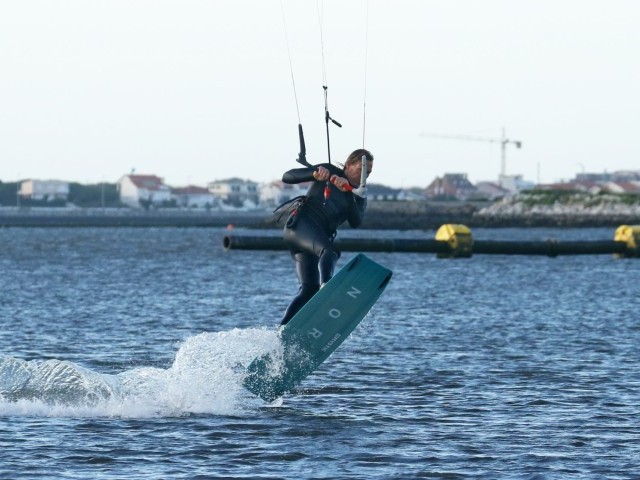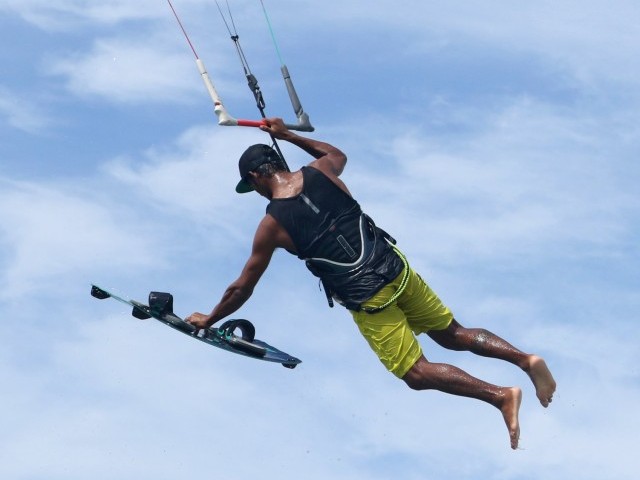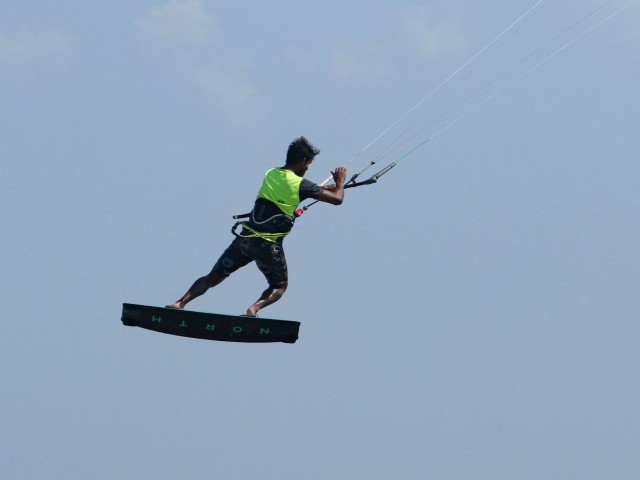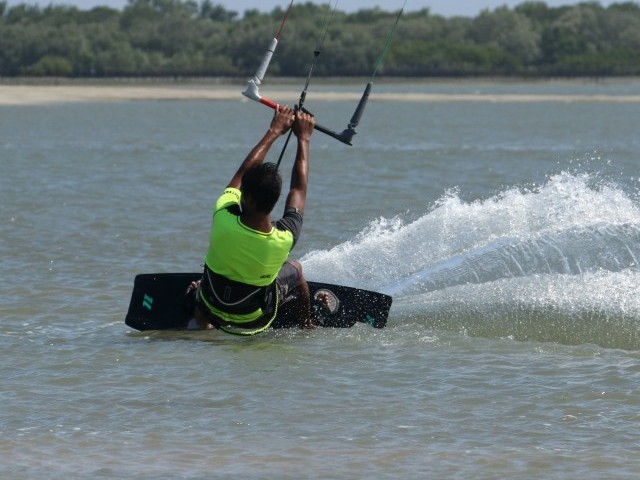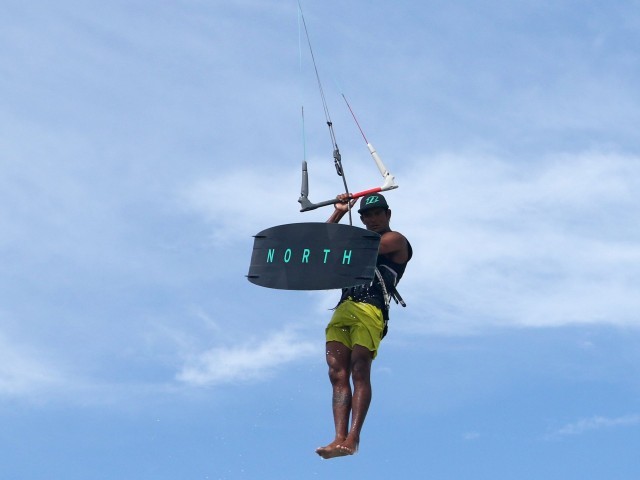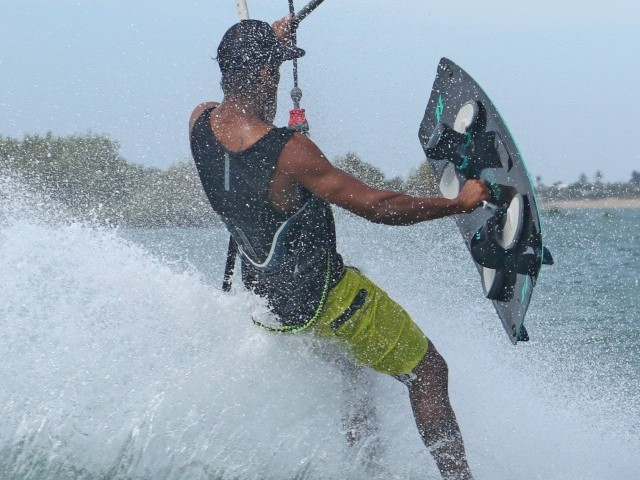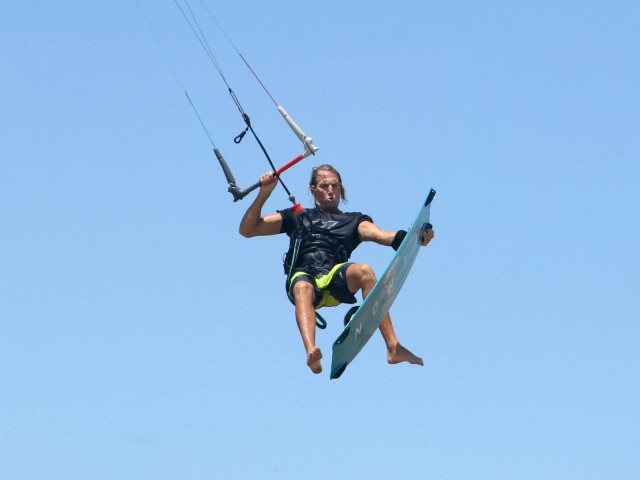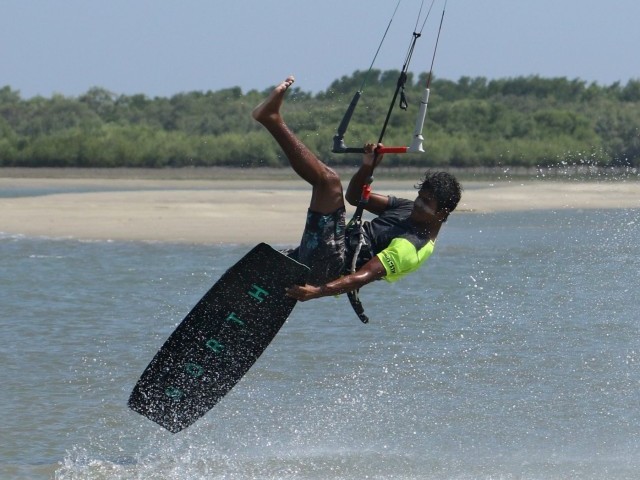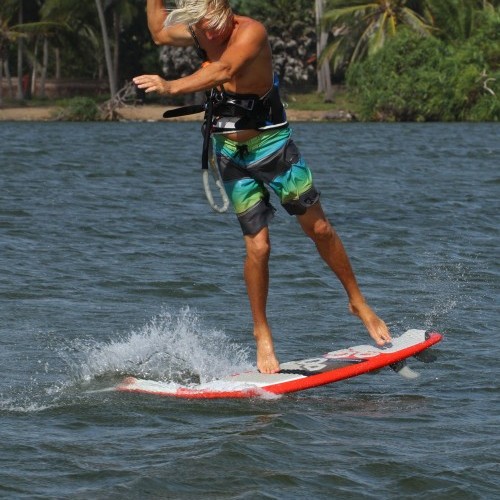
Strapless Pop to Blind with Ole
Technique / Advanced
Introduction
It’s been a while since we proffered up any strapless fun so here’s a personal favourite. Also to any surf aficionados, apologies for the name, using the twin tip equivalent means that it’ll make sense for those coming from a non-surfing background. If you do surf or at least know the names this could almost be a backside air reverse, but then there’s still the matter of the bar, lines and kite. Either way what we’re trying to achieve here is a pop to blind, and then on landing we’ll continue to turn the board downwind whilst travelling backwards, and Ole-ing the bar, until the fins catch and we can continue to ride out as if nothing happened! Brilliantly fun trick, and one that will really help move you on towards other no grab strapless tricks….
If you’ll be trying this we recommend and therefore presume that you’re already happy popping off flat water or small chop. Therefore we won’t go into the minute details of popping (promise to cover that soon though), but will remind you and then concentrate more on the blind and Ole. Here we go!
The Set Up – Pop Reminder Pic A
A few things that’ll make the pop work in your favour when it comes to turning the board to blind.
First off feet position. You can see Christian has his feet relatively wide apart, wider than shoulder width, but not split wide. His front foot is quite far forward (on the forward most strap insert holes), on the upwind side and it’s pointing forward. His back foot is on the pad, but not all the back onto the kick. With too wide a stance it can be difficult to pop, but you need to be able to use your front foot here, so if anything your back foot only needs to be far enough back to push the board down, no further. Experiment a bit as different boards will require different stances.
Next is kite position and trim. Due to the Ole at the end Christian has his kite high, around 12:30, and he won’t move it to pop, only pull in on the bar for lift. Christian has his sweet spot trimmed down, so that he has plenty of throw to push his bar away, very important if you want to stay in control.
You’ll need some speed if your popping off the flat or small chop, but the kite mustn’t be pulling you too much or you won’t be in control as you’ll either be un-weighted or you’ll be edging hard, neither make it easy to get low over the board and pop with it.
And finally even if you are going to cut upwind into a small ramp, remember that you can’t pop off the edge, get your weight over the board so you can cork it up and sheet in as you do.
Air for Blind - Pic B
The way in which you pop in order to control the board whilst turning to blind is critical. Your pop should be aggressive, stamping down onto the board and water, whilst lifting the front leg, Ollie like. It’s important to stay in contact with the board throughout, so don’t overdo it; you want the front foot glued to the board and the back foot in contact with the pad. With your weight over the board as you take off the board will be under you once airborne – this is so much simpler if you take your back hand off as you stamp. Looking at this picture three things stand out. Both feet are in contact with the board. With the back hand off Christian is already pushing the bar out to get rid of any pull from the kite. And finally as he takes off Christian is leaning his head back and looking down to keep the nose high and board on his feet.
The Blind - Pic C
You may have noticed that often when you pop well your board naturally wants to turn off downwind, so you’re going to harness this, control it and exaggerate it in your favour. Turning to blind strapless is similar to blind on a twin tip, but you can’t and shouldn’t lift the back foot. Looking at Christian let’s see what is going on. The bar is still right out, there’s no pull from the kite so he’s not getting pulled away from the board. His head is looking down and turning back whilst he throws his free arm around to turn his body. At the same time his body stays upright, giving him an axis to rotate around. Most of all though his back foot is still low, there is weight on it which keeps the foot back on the tail pad, meaning that as Christian pushes his back foot around, the board will turn with him. If Christian lifted his foot, it would slide up the board slightly and the board would turn under him independently.
The Push - Pic D
What your legs do is really the difference between spinning the board and landing blind. Here in the blind, which by the way will be happening in a blink of an eye, the crux movement is pushing your front foot down as you come around. This will make the nose hit first, which will then pivot the board further, helping with the next bit. By pushing down, you’ll get your weight onto the front foot, with your head and shoulders over the front knee, which will also assist in the next slidey bit and keep the back of the board up, out of the water. Oh yes and the bar is still pushed right out. You can see where Christian’s weight is, as the back foot is momentarily free of the board but the front foot is pushing it down. For any ex windsurfers we’re about to complete a Spock:)
Slide and Ole - Pic E
The slide and Ole can feel a bit rushed, but unlike a twin tip your focus here is on staying balanced whilst the board slides downwind. As long as you have the kite high and the bar out the Ole will “just” happen as you turn under the bar. If your weight is over your front foot the board will slide, and because your front foot is on the original upwind side of the board, on your heels, your rail won’t catch, so as soon as either the tail or the fins bite the board will complete it’s handbrake turn. You can see the angle that Christian’s board is banked at as it turns, whilst he remains upright and over his front foot. As the board comes around he naturally turns under the bar without having to push it around in front of his head.
Claim It - Pic F
As soon as you feel the board turning through the eye of the wind it’s time to get the kite moving. This should handily co-inside with you Ole-ing under the bar, so your front hand will be leading you and you can now pull the bar in to get both tension and power. To prepare for any pull you drop your weight back by moving your hips over your back foot and extending your front leg. The result will hopefully be much like Pic F, nose up, power on, front foot pushing the nose off the wind and maybe even an excitable scream to claim the damn thing.
Top Tips
You don’t need too much speed, the faster you go the faster it’ll all happen and the less likely you’ll be able to keep up. And with a lot of speed the timing of the pop is always more difficult.
If you’re trying on flat water it’ll help if you don’t jump too much into the wind as you won’t have much height/time to get around. Conversely if you’ve got a bit of a ramp and are likely to get higher then jumping more into the wind will enable you to keep control of the board before you land.
Finally as already mentioned, don’t worry about the Ole. If you can land blind, upright over your front foot then the board will start to turn and the rest will fall into place with practice.
Have a good butcher’s at the sequence and the videos to visualise this puppy….
Common Mistakes
Loosing the board in the air. If you have too much speed or too much power (bar trimmed out) you’ll struggle to keep it on your feet so slow down and trim in. Other than that if you lift your back foot the board will spin off without you.
If you’re landing blind and continuing blind, but not sliding around. First off well done, you’re halfway there! Your either bending too much at the waist which puts weight on the rail and makes you edge, or you’re not pushing the front foot down and therefore landing flat. Stay upright and push your front foot down as you turn.
If your tail is digging in as you slide, your weight is too far back and this is probably a result of too much power pulling you. Push you bar as far out as possible and trim the bar down some more.
And finally if you’re spinning off the board as you try and Ole, relax. If you try and push the Ole as on a twin tip you’ll spin on the board but it won’t turn with you. Allow the board to turn first and go with it.
Keystones
- Trimmed and just fast enough to pop
- Flat Pop, bar out
- Keep back foot low as you turn
- Push front foot down
- Slide board with weight on front heel – then Ole
This technique article was in Issue 52 of IKSURFMAG.
Related
By Christian and Karine
Christian and Karine have been working together as a coaching team, running improver to advanced kitesurfing clinics since 2003.






